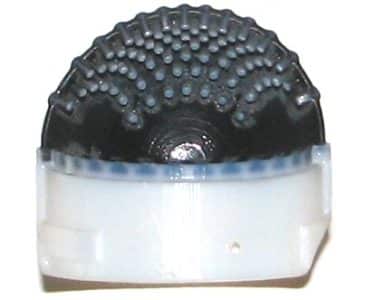This device can mimic human-like nervous signals.
Researchers at the University of Bristol have developed an artificial fingertip that emits signals that appear to be similar to those produced by the human touch nerve. The device is essentially a hollow elastomer dome with a thin wall that measures around 25mm wide. Short rigid rods in a contrasting colour are printed through the rubber. Using a multi-material printer, the entire thing was produced in one pass.

The anatomy is comparable to that of a fingertip, where signals are processed from a matrix of bumps just beneath the skin called papillae, each having a nerve terminal, to provide a touch sensation. The ends of the rods can be seen by a camera inside the dome, and image processing infers distortion in it caused due to interaction with the outside world.
Because the artificial structure is not as sensitive to fine detail as human skin, which the researchers believe is linked to its thickness, efforts are being made to print structures on a scale similar to genuine skin.
“We found our 3D-printed tactile fingertip can produce artificial nerve signals that look like recordings from real, tactile neurons,” according to Bristol’s professor of robotics, Nathan Lepora. “Human tactile nerves transmit signals from various mechanoreceptors, which can signal the pressure and shape of a contact. Work by Phillips and Johnson in 1981 first plotted electrical recordings from these nerves to study tactile spatial resolution using a set of standard ridged shapes. We tested our artificial fingertip as it felt those same ridged shapes and discovered a startlingly close match to the neural data.”
“Our work helps uncover how the complex internal structure of human skin creates our human sense of touch,” said Lepora. “This is an exciting development in soft robotics – being able to 3D-print tactile skin could create robots that are more dexterous or significantly improve the performance of prosthetic hands by giving them an in-built sense of touch.”
The researchers have published two papers on this work. Click here and here to view each.






